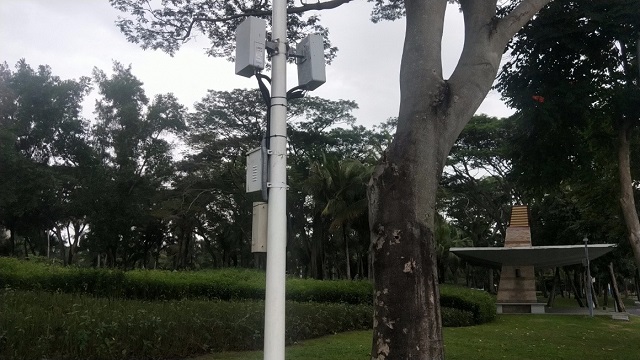China Telecom Shenzhen and Huawei announced they have achieved the ‘global ultra-large scale 3D networking’ using both macro and pole-based cell sites in China.
According to a release from Huawei, the deployment of hundreds of 5G C-Band Book RRUs will help China Telecom Shenzhen deliver an improved experience in 5G-covered areas.
“Book RRU is an innovative product that is small in size, lightweight, and easy to deploy. This offers an effective approach of addressing challenges associated with insufficient site resources. 5G Book RRUs enable significant improvements in 5G in-depth coverage and user experience in residential areas while increasing network capacity,” the firms said in a statement.
The companies noted that in-depth coverage in residential areas, urban villages and backstreet alleys is a long-standing challenge faced by operators. Insufficient resources and difficult acquisition lead to difficult and time-consuming site deployment, they said.
“Lightweight 5G Book RRUs enable quick 5G deployment in residential areas by using walls, lamp poles, monitoring poles, and electricity poles as sites. This offers a quick solution to achieving quick deployment, helping eliminate coverage holes and offload network traffic,” the firms said.
In December 2019, China Telecom Shenzhen completed the deployment and verification of the first 5G Book RRU. Four-transmit-four-receive 5G Book RRUs were used in the project.
After the recent 5G Book RRU deployment, tests showed that the downlink speed exceeds 1.2Gbps on commercial mobile devices (the Mate30 Pro) when the network spectrum available was 100 megahertz. With Book RRU deployment, coverage holes 150 to 200 meters away from streets are eliminated and indoor in-depth coverage of low-rise buildings standing 50m to 100m above the ground is achieved, according to China Telecom Shenzen, which it added “places the operator in a unique position to meet the capacity requirements in value hotspots in Shenzhen, such as school campuses, office buildings, business districts, and parks. Book RRUs supplement macro base stations with in-depth coverage and hotspot capacity absorption. This improves user experience and releases suppressed traffic while also increasing ROI.”
China Telecom Shenzhen said it will continue to collaborate with Huawei to complete quick 3D networking based on 5G standalone (SA) technologies through combined deployment of macro, pole, and indoor products, enabling optimal user experience while securing 5G leadership.
China Telecom ended February with a total of 10.73 million subscribers in the 5G segment, according to a recent presentation.
The Chinese operator also confirmed plans to spend 45.3 billion yuan ($6.4 billion) on 5G in 2020, up compared to 9.3 billion yuan last year.
In its 2019 full-year results presentation, China Telecom said last year 5G comprised just 12% of its total capex. This year, 5G will represent 53% of the telco’s overall capex.
The firm also said it is targeting a goal of 60-80 million 5G subscribers by the end of this year.
China Telecom has already deployed 40,000 5G base stations across China and co-shared another 20,000 with rival operator China Unicom in 2019, covering 50 cities under a network-sharing deal. Both carriers target having around 300,000 compatible base stations in use by end-2020.

